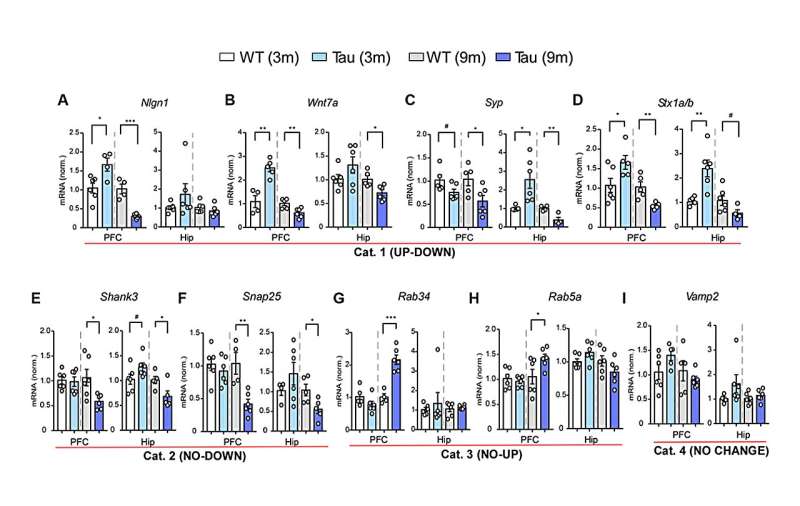This article has been reviewed according to Science X's editorial process and policies. Editors have highlighted the following attributes while ensuring the content's credibility:
fact-checked
proofread
Longitudinal characterization of behavioral, morphological and transcriptomic changes in a tauopathy mouse model

A new research paper titled "Longitudinal characterization of behavioral, morphological and transcriptomic changes in a tauopathy mouse model" has been published in Aging.
Neurodegenerative disorders, such as Alzheimer's disease (AD), have the gradual onset of neurobiological changes preceding clinical diagnosis by decades. In their new study, researchers Qing Cao, Manasa Kumar, Allea Frazier, Jamal B. Williams, Shengkai Zhao, and Zhen Yan from the State University of New York at Buffalo's Jacobs School of Medicine and Biomedical Sciences aimed to elucidate how brain dysfunction proceeds in neurodegenerative disorders.
The paper states, "[...] we performed longitudinal characterization of behavioral, morphological, and transcriptomic changes in a tauopathy mouse model, P301S transgenic mice."
P301S mice exhibited cognitive deficits as early as 3 months old, and deficits in social preference and social cognition at 5–6 months. They had a significant decrease of arborization in basal dendrites of hippocampal pyramidal neurons from 3 months and apical dendrites of PFC pyramidal neurons at 9 months.
Transcriptomic analysis of genome-wide changes revealed the enrichment of synaptic gene upregulation at 3 months of age, while most of these synaptic genes were downregulated in PFC and hippocampus of P301S mice at 9 months. These time-dependent changes in gene expression may lead to progressive alterations of neuronal structure and function, resulting in the manifestation of behavioral symptoms in tauopathies.
"In conclusion, our longitudinal characterization of behavioral, morphological and transcriptomic changes in a tauopathy mouse model is to elucidate potential mechanisms that drive the progression of AD and related neurodegenerative disorders. Manipulation of key molecular players coupled with electrophysiological measurements of neuronal functions in future studies will help identify early intervention strategies for these diseases," the research says.
More information: Qing Cao et al, Longitudinal characterization of behavioral, morphological and transcriptomic changes in a tauopathy mouse model, Aging (2023). DOI: 10.18632/aging.205057



















